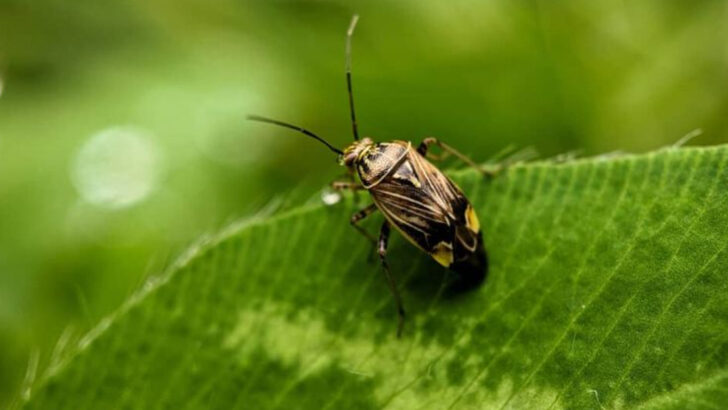Your backyard might be beautiful—but it could also be deadly. Lurking beneath the grass, hiding under leaves, or buzzing just out of sight are insects that sting, bite, and in rare cases—kill. And they’re not just tropical threats. Many of these dangerous bugs are making themselves at home in neighborhoods across the United States. We’re talking about venomous spiders that creep into shoes, wasps that sting without warning, and bloodsuckers that quietly spread disease. Some are so small you’d never notice them… until it’s too late. From killer bees to flesh-eating ticks, this list reveals the 14 deadliest insects you might meet without ever leaving your yard. It’s not just creepy—it’s real.
Black Widow Spider

The Black Widow Spider, though technically an arachnid, is notorious for its venomous bite. Often hidden in the shadows of your garden, this spider is easily identifiable by its glossy black body and iconic red hourglass marking.
Its venom is neurotoxic and can cause severe muscle pain and cramping, especially in sensitive individuals. While fatalities are rare, the discomfort it causes is significant and requires medical attention.
Despite its fearsome reputation, the Black Widow is not aggressive and bites only when threatened.
Brown Recluse Spider
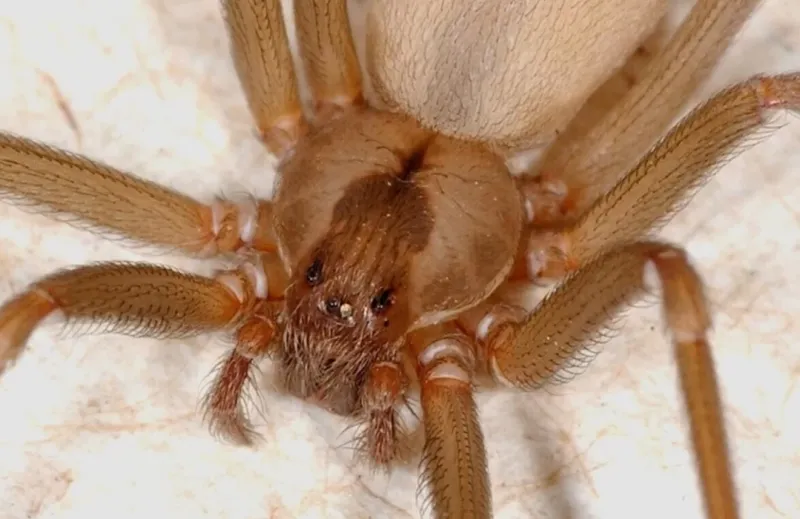
The Brown Recluse Spider is another arachnid that often creeps into backyards, creating concern with its necrotizing venom. Known for the violin-shaped marking on its back, this spider prefers hiding in dry, undisturbed areas.
A bite from the Brown Recluse can lead to severe skin damage and necrosis, potentially requiring extensive medical treatment. The initial bite is often painless, leaving victims unaware until symptoms develop.
Preferring solitude, it seldom bites unless provoked, making awareness crucial when moving items in your yard.
Africanized Honey Bee (“Killer Bee”)
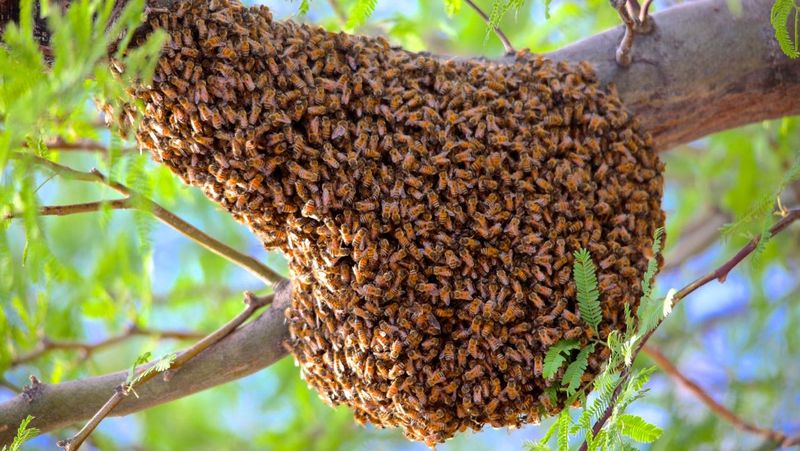
The Africanized Honey Bee, often called a “Killer Bee,” is infamous for its aggressive behavior. Originating from hybridization in the 1950s, these bees have spread throughout the southern United States.
Unlike their European counterparts, Africanized Honey Bees defend their hives with relentless zeal, often chasing perceived threats over long distances. In large numbers, their stings can be deadly, especially to those with allergies.
The increased aggression of these bees demands caution and respect when approaching potential hive sites or encountering swarms in nature.
Mosquito (Aedes aegypti)
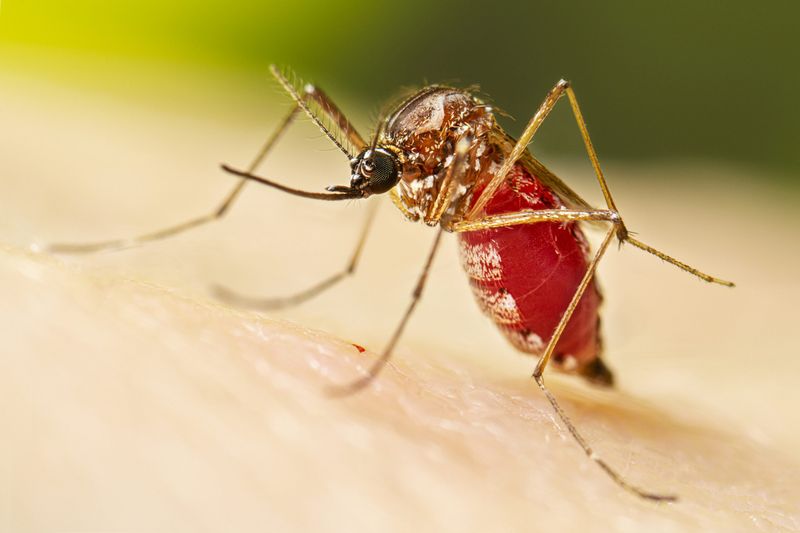
Mosquitoes are more than just a nuisance; they are vectors for a plethora of serious diseases. The Aedes aegypti species, in particular, is responsible for spreading Zika, West Nile virus, dengue, and more.
Their bites can transmit these viruses, causing widespread health concerns. This mosquito thrives in warm climates, often breeding in standing water found in backyards.
Prevention is key; eliminating stagnant water sources can significantly reduce mosquito populations, helping protect your family from these silent but deadly carriers.
Ticks (Blacklegged/Deer Tick)
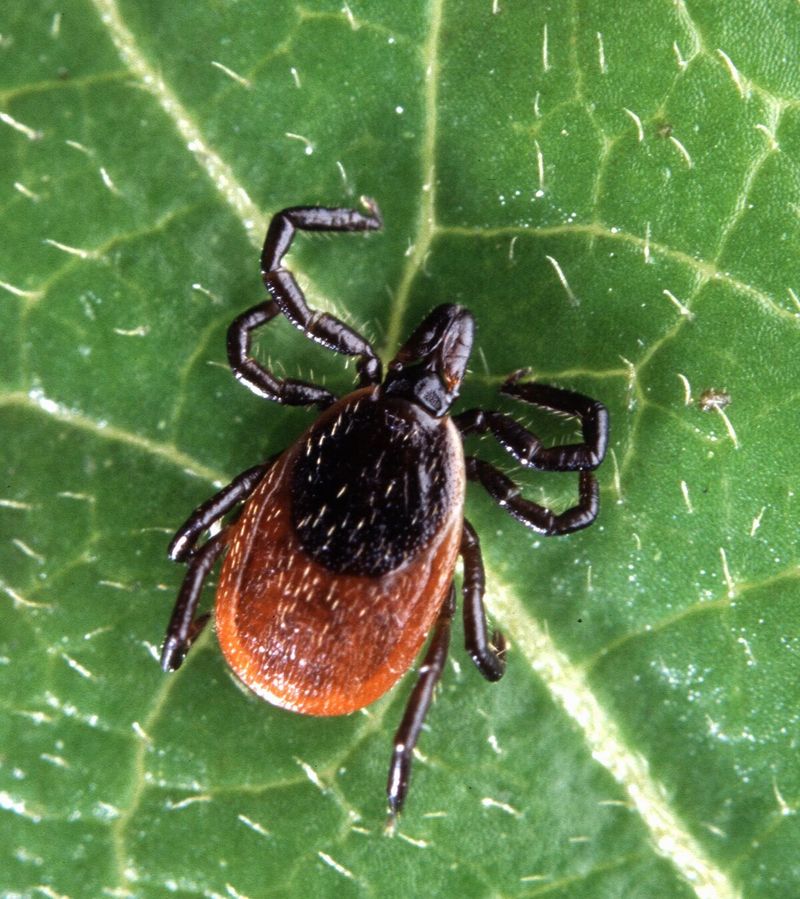
Ticks, specifically the Blacklegged or Deer Tick, are tiny arachnids with a formidable reputation for spreading Lyme disease, babesiosis, and anaplasmosis. Their presence in backyards is often inconspicuous, hidden in grass or leaf litter.
When they attach to human or animal hosts, they can transmit pathogens that cause serious illness. Promptly removing ticks reduces the chance of infection, making vigilance crucial after outdoor activities.
Wearing protective clothing and using tick repellents can minimize the risk of tick bites, safeguarding your health while enjoying outdoor spaces.
Yellowjackets
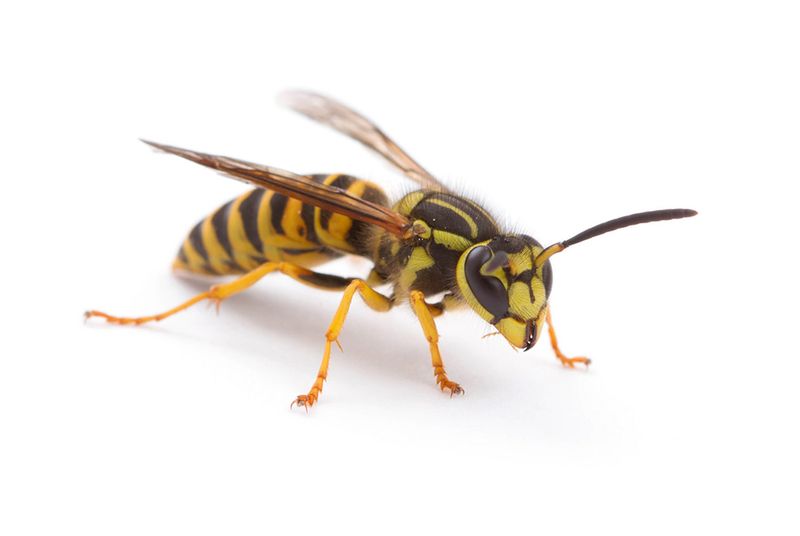
Yellowjackets are notorious for their aggressive nature, especially when their nests are disturbed. These wasps are easily recognizable by their striking black and yellow stripes.
Their stings are not only painful but can also cause severe allergic reactions in sensitive individuals. This makes them particularly dangerous when encountered in backyards, where nests are often hidden from view.
Understanding their behavior and taking precautions, such as avoiding sudden movements near nests, can help mitigate the risk they pose.
Paper Wasps
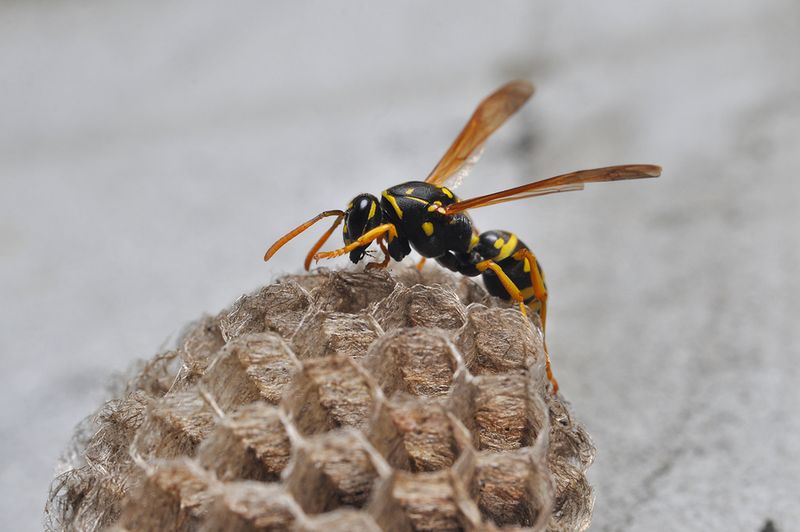
Paper Wasps, while less aggressive than Yellowjackets, pose a significant threat when provoked. Their nests, often found under eaves or in trees, are crafted from a paper-like material.
These wasps can deliver multiple stings, making them dangerous to those allergic to insect venom. Despite their potential threat, they play a beneficial role in controlling pest populations.
Recognizing and respecting their nests can prevent negative encounters, allowing coexistence with these natural pest controllers in your garden.
Fire Ants
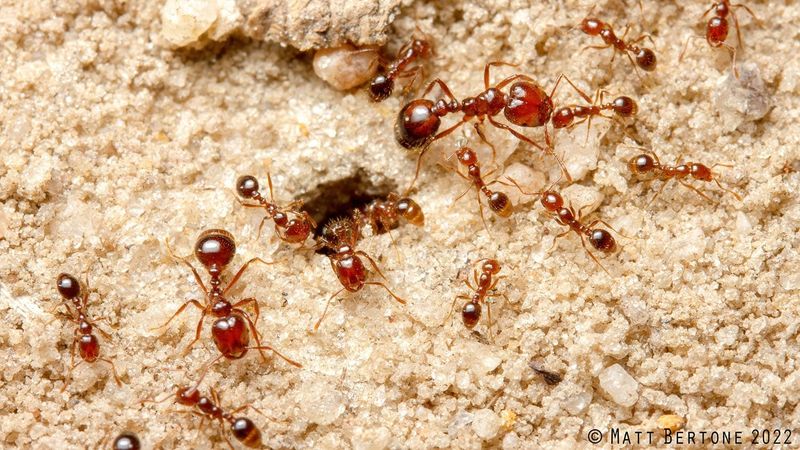
Fire Ants are small but mighty insects known for their painful, venomous stings. Their fiery red color and aggressive nature make them a formidable presence in southern U.S. backyards.
A single sting can cause intense itching and discomfort, while multiple stings may lead to allergic reactions or anaphylaxis in sensitive individuals. Identifying and avoiding their mounds is an essential step in preventing stings.
Eradicating these ants requires careful management, as disturbing their nests can provoke aggressive swarming behavior, risking numerous painful encounters.
Assassin Bugs (Kissing Bugs)
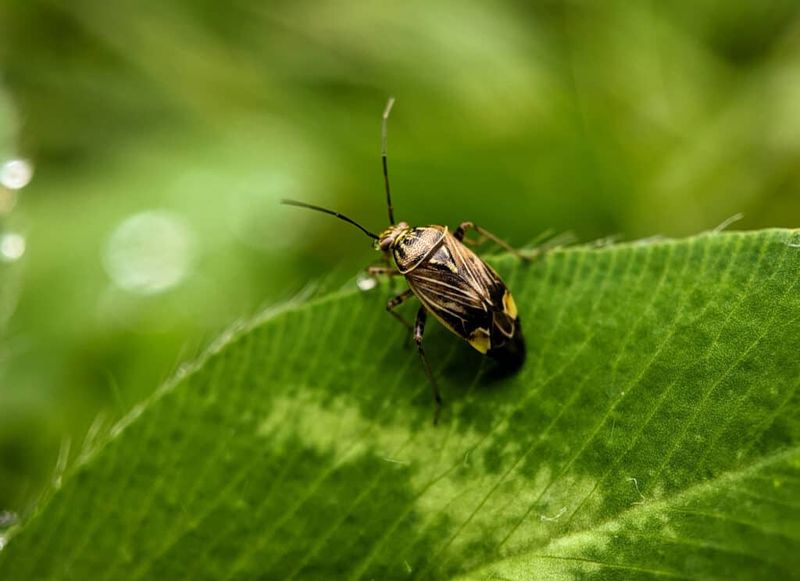
Assassin Bugs, commonly known as Kissing Bugs, are notorious for their role in transmitting Chagas disease. Their cone-shaped heads and elongated bodies make them easily identifiable.
These bugs are often found in and around homes, particularly in the southern U.S., where they feed on the blood of mammals. Chagas disease, resulting from their bites, can have severe health impacts if left untreated.
Understanding their habitats and behavior is crucial in preventing bites, ensuring a safer outdoor and indoor environment for your family.
Bald-Faced Hornets
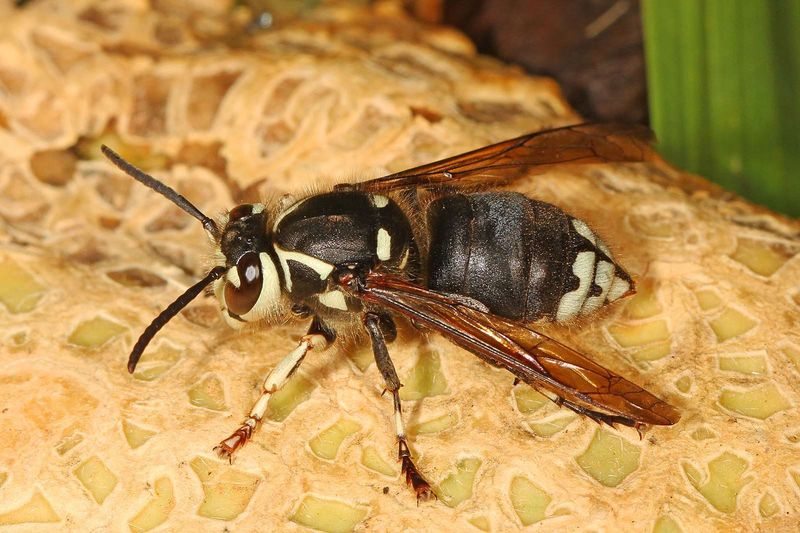
Bald-Faced Hornets, known for their distinctive black and white markings, are aggressive defenders of their nests. These insects build large, football-shaped nests in trees.
Their stings are painful and can be dangerous to those with allergies, sometimes resulting in severe reactions. Unlike other wasps, Bald-Faced Hornets can sting multiple times when provoked.
Approaching a nest requires caution, as their defensive nature can lead to swarming and multiple stings, posing significant risks to those nearby.
Blister Beetles
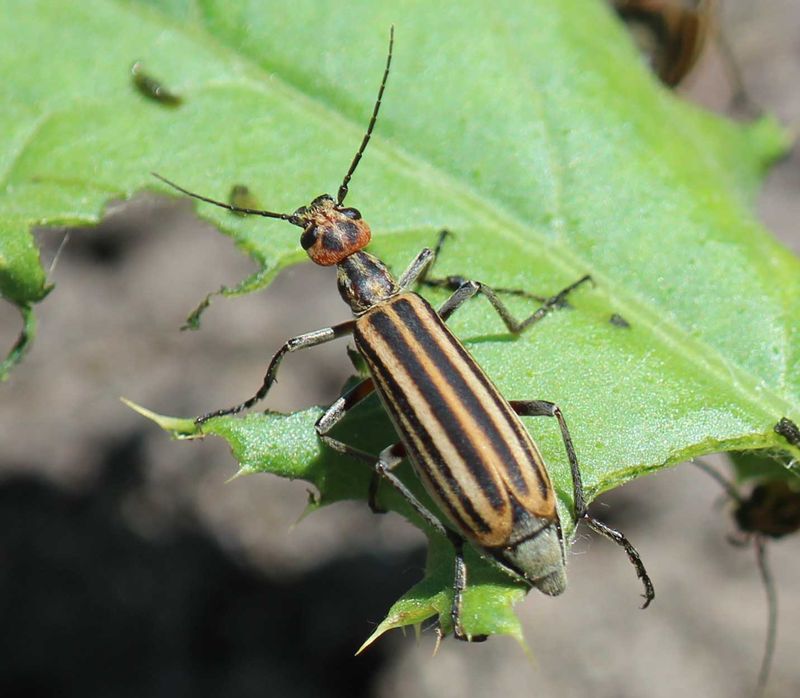
Blister Beetles, with their elongated bodies and vibrant colors, are captivating yet hazardous garden dwellers. They secrete cantharidin, a potent toxin causing skin blistering upon contact.
Ingesting even small amounts of this toxin can lead to severe internal damage, posing risks to humans and animals. These beetles are often found feeding on flowers and foliage.
Wearing gloves while gardening and ensuring pets do not consume these beetles can prevent accidental exposure to their harmful secretions.
Wheel Bugs
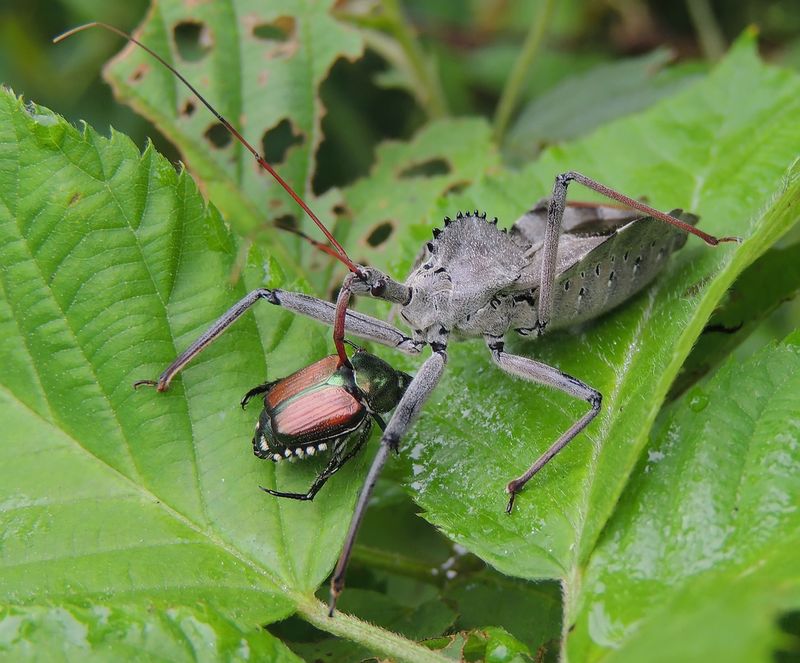
Wheel Bugs are unique predators, recognized by the cogwheel-like structure on their thorax. While beneficial for pest control, their bite is notably painful, often compared to a bee sting.
These bugs are not aggressive but will defend themselves if handled. Their predatory nature helps keep garden pests in check, making them a crucial part of the ecosystem.
Admiring these bugs from a distance and avoiding direct contact ensures safety while appreciating their role in maintaining garden health.
Giant Water Bugs
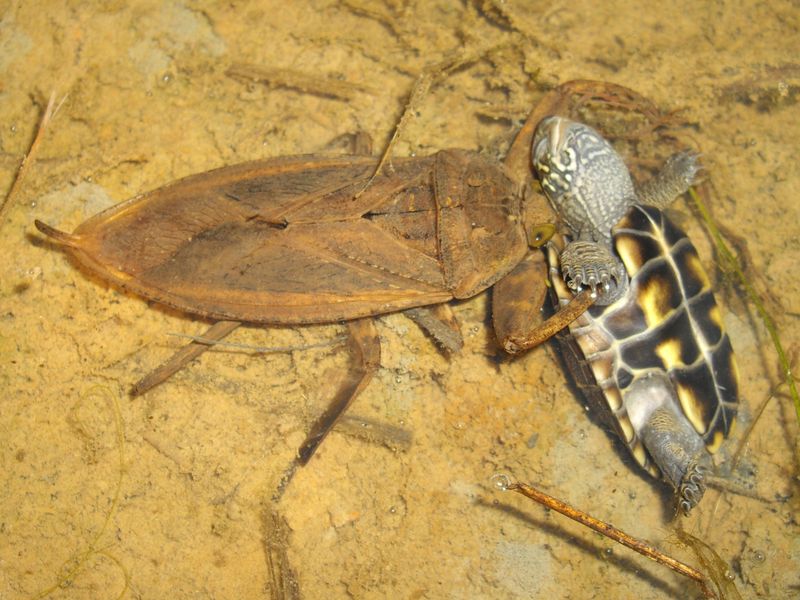
Giant Water Bugs, often mistaken for “Toe Biters,” are aquatic insects known for their intense bite. Their large, flat bodies and powerful legs make them adept swimmers.
While their bite is not fatal, it is extremely painful, akin to a scorpion sting. These insects are typically found in ponds and slow-moving waters.
Handling them with care, or avoiding them altogether, is advisable to prevent painful encounters while enjoying freshwater activities in their natural habitat.
Eastern Cicada Killer Wasps
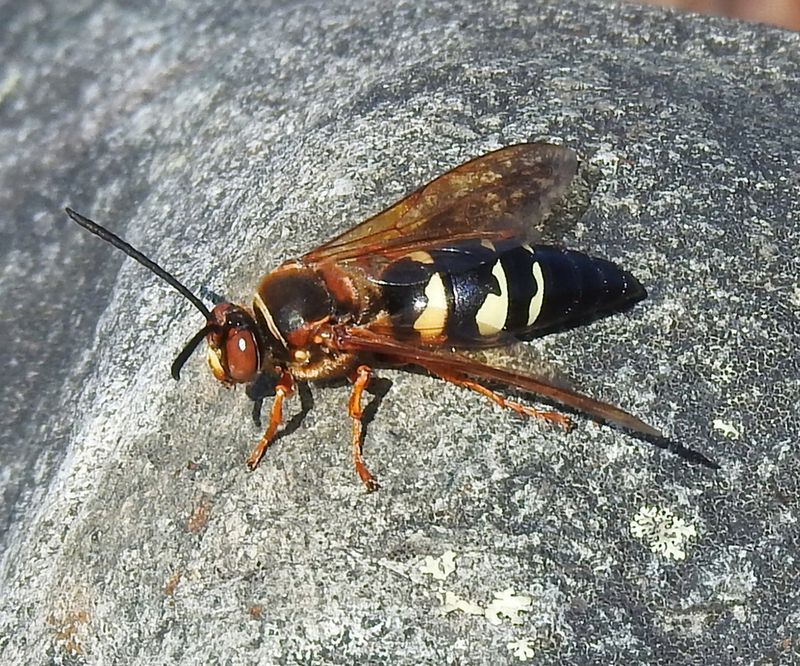
Eastern Cicada Killer Wasps are impressive in size and presence, often misunderstood due to their intimidating appearance. Despite their formidable look, they are not typically aggressive toward humans.
These wasps prey on cicadas, playing a beneficial role in controlling cicada populations. However, their sting can be painful if provoked.
Understanding their non-aggressive nature and role in the ecosystem allows for coexistence, minimizing unnecessary fear while enjoying the natural symphony of summer cicadas.

